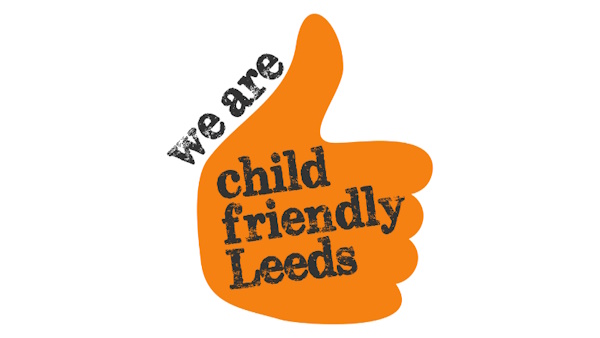What is bullying
There is no legal definition of bullying. However, it’s usually defined as behaviour that is:
- repeated
- intended to hurt someone either physically or emotionally
- often aimed at certain groups, for example because of race, religion, gender or sexual orientation.
Bullying can include: physical assault, teasing, making threats, name calling and cyberbullying.
Some schools use the useful mnemonic of ‘STOP’ (Several Times On Purpose) to distinguish bullying from the one-off or accidental hurting of a child or children.
Bullying can take several forms; some are obvious e.g. physical assault, intimidation, threats and name-calling.
Others are more subtle and harder to identify immediately e.g. exclusion or a certain look or sign that conveys meaning.
The focus of some bullying can be specific e.g. racist, homophobic, sexual or predicated on any discernible difference e.g. body shape or disability.
The most authoritative descriptions of different types of bullying can be found at the websites of the Anti-Bullying Alliance and Child Line.
The most authoritative descriptions of different types of bullying can be found at the websites of the Anti-Bullying Alliance and Childline
When it takes place in schools, bullying tends to be more common in Key Stage 2 (7-11) and Key Stage 3 (11-14).
It’s thought that at earlier ages, children do not really think very much about differences between them, and at later ages young people have learned to tolerate and celebrate differences.
However, bullying can still occur at these younger and older ages; its just less common.
Bullying can make victims’ lives miserable, frightening and even unbearable – affecting their happiness, fulfilment, learning, wider success and safety.
What is cyber bullying
Cyberbullying (also called 'online bullying') is bullying and harassment using technology.
It is when a person or a group of people use the internet, email, online games or any other kind of social media or digital technology to threaten, tease, upset or humiliate someone else.
This can include trolling, mobbing, stalking or any form of abuse online. Cyberbullying is most certainly on the increase and more cases are being reported by children and extremely worried parents.
What does the law say
Some forms of bullying are illegal and should be reported to the police.
These include: violence or assault, theft, repeated harassment or intimidation, e.g. abusive name calling, threatening phone calls, emails or text messages and hate crimes (against specific groups such as ethnic groups or gay or trans-gender people).
By law, Section 89 of the Education and Inspections Act 2006all state schools must have a behaviour policy in place that includes measures to prevent all forms of bullying among pupils.
This policy is decided by the school. All teachers, pupils and parents must be told what it is.
Good practice, not the law, strongly suggests that teachers, pupils and parents should be involved in deciding the policy and how it will be implemented.
Schools must also follow anti-discrimination law as set out in the guidance Equality Act 2010 and Schools This means staff must act to prevent discrimination, harassment and victimisation within the school.
What should practitioners do if they suspect bullying
In schools, staff will deal with bullying in different ways, depending on how serious the bullying is.
They might deal with it in school, for example by using the behaviour policy, or they might report it to the police and/or social services.
Any sanctions must take account of special educational needs or disabilities that the pupils involved may have.
If a practitioner working with a child is concerned about bullying or a child reports bullying they should:
- discuss the issue with a colleague and/or their line manager or Designated Safeguarding Lead;
- access the organisation’s anti-bullying policy to see what they should do; and
- leave the issue in the hands of an appropriate manager but ensure that they have arranged to review the actions and situation in a few days and weeks’ time.
What support is available
There are several options for children and young people to seek help including:
- teacher or other member of staff such as a learning mentor or teaching assistant. It can be very hard for a young person to tell an adult, partly because they fear it might make the bullying worse and partly because adults aren’t always easily available in private.
- their parent or carer are usually able to understand them more fully as an individual, be able to articulate their concerns more clearly to those in authority and to oversee and monitor action
- their class or school council which may have a role in upholding school rules and codes of behaviour
- their friends who may often be able to give advice and offer protection
Schools in Leeds have staff who will be able to support children through one to one work, small group intervention or restorative practice. Such interventions can be useful for both victims and bully (bullies).
If this is felt to be insufficient then school can refer children to the Cluster’s Support and Guidance meeting to seek help and advice from a multi-professional team which includes mental health support.
Other ways to seek support
Contacting The Market Place Tel: 0113 2461659 which offers information and counselling for young people aged 13-25.
Seeking help from the child or young person’s GP who may be able to refer them to emotional health counselling and support.
Visiting the MindMate website which has a worried about Bullying page and provides a range of helplines and advice.
‘Mindmate’ is Leeds’ own emotional wellbeing and mental health website. It also has advice for parents, carers and practitioners who work with young people.
Organisations that provide support and advice include: Anti Bullying Alliance Bullying UK Childline The Diana Award Internet Matters Kidscape The UK Safer Internet Centre UK Council for Child Internet Safety (UKCCIS)
Printable version
